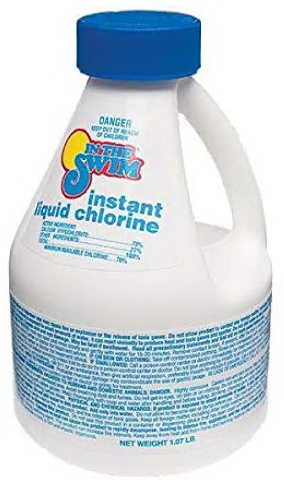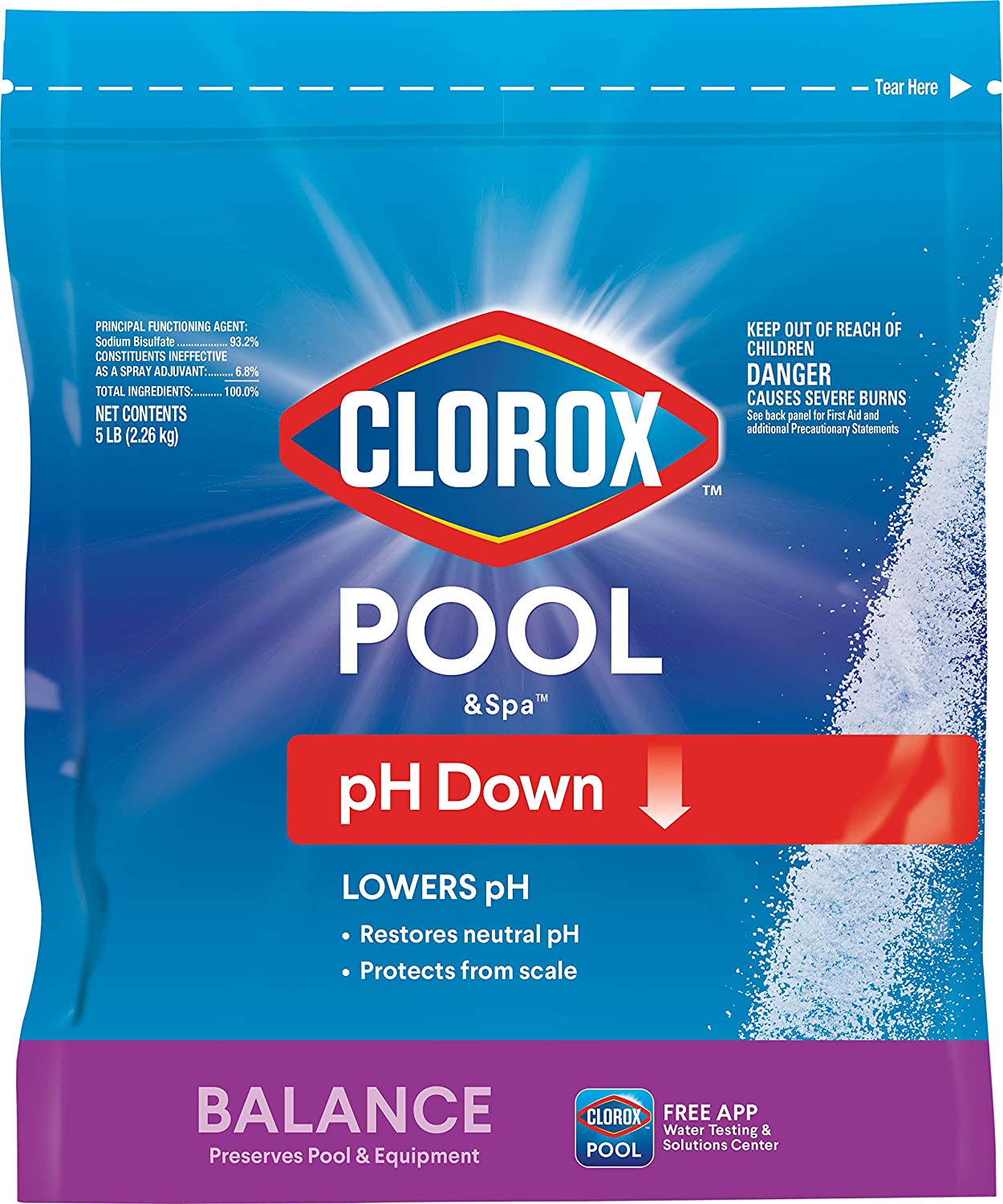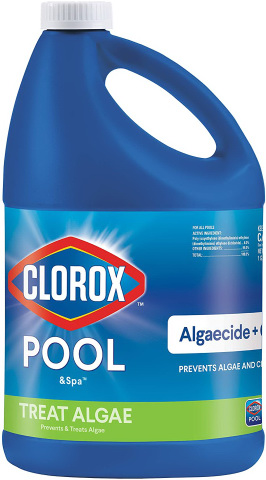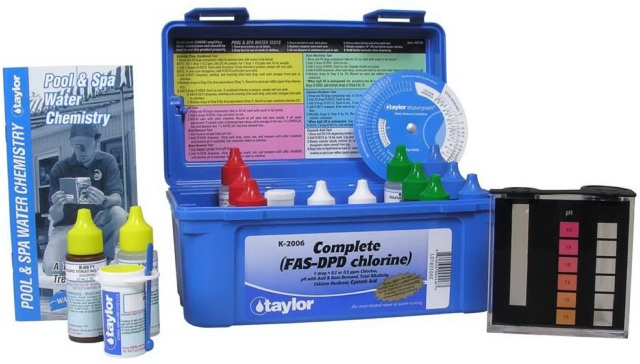Milky pool water can be a headache for pool owners, but it doesn’t have to be, as it can be fixed rather easily. The cause of milky water can usually be determined quickly and can be remedied in just a few steps.
Milky pool water is not safe to swim in and can be caused by things such as poor water chemistry, improper filtration, or low sanitation levels. Milky pool water can be cleared up by cleaning your pool surfaces and filter as well as ensuring all chemicals are balanced properly. You should also run your pool filter until the water clears back up.
In this article, we will dive deep into what exactly causes milky water and the exact steps to remedy it and prevent milky water in the future.

Article Contents
Is it Safe to Swim with Milky Pool Water?
Dangers of Cloudy Pool Water
Cloudy pool water not only looks poor in your pool, but it also brings with it potential dangers that need to be addressed immediately. Here’s the issues and dangers of cloudy pool water:
- Dangerous bacterial growth
- Skin and eye irritations
- Safety issues for supervising young children
Cloudy pool water can indicate that your chemical levels are not where they need to be. Imbalanced chemical levels such as low pH or chlorine can lead to cloudy water and become dangerous.
Improper chemical levels make your pool unsafe to swim in. It is recommended to keep chlorine levels between 1.0-3.0 ppm, anything lower is not safe for swimming.
If your chlorine levels are low, your pool won’t be properly sanitized. This means the potential to have bacteria in the water you are swimming in, which can make you sick.
Along with possible bacteria issues, cloudy water is a safety issue. If your water gets too cloudy, you might not be able to see swimmers, especially children, while they are in the pool. This obviously makes it difficult to properly supervise children. For this reason, it is recommended to not swim in a pool when you cannot see the bottom.
The dangers of a cloudy pool should not be ignored and should be addressed as soon as possible to avoid any further issues.
Stages of Milky Pool Water
Stage 1: Dull Pool Water
The first stage of milky pool water is for your water to become dull. When your pool water becomes dull, it hasn’t become cloudy yet, but that crystal clear shine that you’ve come to love so much from your pool begins to fade. It’s still OK for swimming in.
Stage 2: Hazy Water
After your water becomes dull, it then moves into a hazy stage. Within this stage, the bottom of your pool is still visible, but not as clear as it once was. If you have a design on your pool liner or bottom of your pool, the details will not be as visible as before.
This is like another warning sign that something is amiss, and you should fix it now. It’s still OK to swim.
Stage 3: Cloudy Water
When your pool has reached the cloudy stage, the bottom of the pool is typically visible in the shallow end but becomes hard to see when you look into the deep end. You want to be careful before swimming in the pool: make sure the chlorine levels and pH levels are OK. And if you can’t see the bottom, you shouldn’t be swimming.
Stage 4: Milky Water
When your pool water becomes milky, it has a milk-like white appearance and much like cloudy water, the shallow end may allow for the bottom to be visible, but this will not be the case in the deep end.
You definitely shouldn’t be swimming in a pool with milky water.
Stage 5: Opaque Water
Opaque pool water occurs when your water has become so milky that the bottom of the pool is no longer visible from any spot. This is an absolute do not swim situation.
Common Causes for Milky Pool Water?
Improper Filtration
Problems with your pool pump can lead to milky pool water. A pool pump that is clogged with debris can slow down your flow rate and not be able to properly filter the water the way it usually would.
This can lead to more dirt and debris staying in your pool and without water circulation, cloudy water can occur.
As pool filters get older, they can begin to wear out and not work properly. Aging pool filters can have many issues such as broken parts, clogged filter mediums. The good news is that it can usually be fixed without having to get a new filter.
Additionally, make sure you are running your pool filter eight to twelve hours a day to ensure proper water filtration.
If your pool pump is noisy you’ll want to troubleshoot your pool pump to ensure it is working properly.
Poor Water Chemistry
Poor water chemistry is another leading cause of milky pool water. It is best to frequently check your chemical levels so that you know exactly when you need to make adjustments.
Incorrect chlorine levels, incorrect pH levels, or high calcium and or metal content are all factors that will turn your pool water milky.
Environmental Factors
Environmental factors can contribute to a cloudy pool. Weather, such as wind and rain can cause dirt, mud, debris, and other contaminants to get into your pool. When this happens, your pool can become cloudy, especially if leaves are clogging up your filter.
If it rains enough, the added water from the rain can dilute your chemicals and make them less effective. This coupled with added contaminants from a storm can cause your water to become cloudy.
Always make sure your chemicals are well-balanced and the water level in your pool isn’t too high. It is also important to make sure you skim and vacuum your pool after storms to avoid any issues with water chemistry or filtration.
Milky Pool Water After Shocking
It is not uncommon for pools to become milky not long after shocking. If this occurs, don’t panic. Milky pool water after shocking typically resolves itself after 24 hours.
If your pool remains milky 24 hours after shocking, you may need to look further into the problem.
Further Reading: Can You Over Shock Pool? Pool Now Cloudy
Use A High Quality Shock
When shocking your pool, be sure that the main ingredient in your shock is calcium hypochlorite. Other shocks are usually cheaper, but you get what you pay for, which can include cloudy water.
Here’s a high quality shock for your pool:

Check pH and Alkalinity Levels
If you shock your pool and notice milky water, check your pH and alkalinity levels. A pH that is above 8.0 and alkalinity levels that are high can contribute to cloudy water. Use a pH decreaser to get these back into range.
Here’s a pH decreaser:

High Calcium Levels
Pool shock that contains calcium hypochlorite will raise your calcium hardness about 5 ppm for every pound that is used. If your calcium hardness is above 500 ppm when using this type of shock, your pool water will become cloudy.
If this is the case, you should use liquid chlorine to shock instead.
Milky Pool Water After Algicide
Your pool water may become milky after using algicide in your pool if the algicide contains copper.
Here’s an algicide we recommend:

Some algaecides contain copper which can result in a chemical reaction in your pool, especially after shocking or generally high chlorine levels, that leads to green looking water.
If your pool water becomes milky due to algaecide, it is best to wait it out by keeping your pool filter running until the water has cleared up.
If the copper levels in your pool are greater than 2 ppm, then you should avoid high chlorine levels as this will likely lead to milky water.
How to Clear Milky Pool Water
Step 1: Balance Chemicals
The chemicals in your pool should be balanced to ensure proper levels. Your pool water should be tested regularly as doing so will allow you to make necessary changes to your chemicals before you even notice signs of your pool water going milky.
Use a high quality test kit for accurate readings.

If your pool is very milky due to low chlorine levels, you will need to add chlorine to your pool to get it back to proper levels. Make sure you are adding the correct chlorine that is best for your type of pool.
You will also want to add algicide to help get rid of algae and bring your pool back to its proper shine.
Here’s an algicide:

Step 2: Clean Your Pool
One of the first things you should do in order to clear milky pool water is to clean your pool. When cleaning your pool, all debris such as leaves and dirt should be removed.
Use a skimmer to pick up big objects out of the water and then manually vacuum to get dirt and other small debris from the bottom of your pool.
Here’s a swimming pool brush we recommend:

You will also want to brush the sides and bottom of your pool surfaces to get any dirt or other remaining debris off your surfaces.
After cleaning your pool, add a clarifier to your water. This helps bond the particles in your pool together making them easier for your pool to filter.
Here’s a pool clarifier:

Step 3: Run Your Pool Filter
Once your chemicals have been added to your pool, it is important to leave your pool filter on until the water has cleared up. A few hours a day won’t cut it here. You need to leave it run continuously.
Many pool owners have milky pool water because they don’t run their filter for long enough. Keeping your pool filter running is an essential step as it ensures it will clear the pool of all the bacteria and other contaminants and will allow the added chemicals to circulate for the time needed.
During this process, if your pool had been overly dirty, your water pressure may rise above normal levels. If this happens, you should clean and backwash your pool filter and continue running.
Step 4: Test Water and Run Pool Filter Normaly
Once your pool water has returned to its crystal clear state, test your pool water again to ensure that all chemicals are in the desired range. Add chemicals as needed to adjust the chlorine, pH, alkalinity and calcium hardness levels.
When your water has returned to a clear state, you may also resume operating your pool filter as normal, running it about 8-12 hours a day.
Can Too Much Chlorine Cause Milky Water?
While too little chlorine is usually the cause of milky pool water, too much chlorine can actually cause the same effect.
If too much chlorine is added to your pool, calcium can be solidified and can turn into calcium carbonate. When this happens, the pool water can become cloudy due to solid microparticles.
When your pool has become cloudy as a result of too much chlorine, you’ll have to work to bring your chlorine levels back down to desirable levels. Don’t stress though, we have an article showing you how to fix that: Can Too Much Chlorine Make Pool Water Cloudy?
How to Prevent Milky Pool Water
Milky pool water is something no pool owner wants to see. Fortunately, milky pool water can usually be prevented before it even shows up.
Check Your Chemicals
The first step in preventing your pool from becoming milky is to check your chemicals. Ensuring each chemical is in the proper range will go a long way in keeping a crystal clear pool.
Check out the chart below for desired chemical ranges.
| Chemical | Desired Range |
| Free Chlorine | 1.0-3.0 ppm |
| pH | 7.2-7.6 |
| Total Alkalinity | 80-120 ppm |
| Calcium Hardness | 200-400 ppm |
| Cyanuric Acid | 30-50 ppm |
When you notice chemicals are out of balance, add as needed to bring them back to the correct range.
Be sure not to add more than one chemical at a time as doing so can cause a chemical reaction in your pool and we want to avoid this at all costs.
Wear protective gloves, goggles and clothing to prevent chemical burns or other kinds of harm. You should also follow manufacturer’s directions on the package when adding chemicals to your pool.
If you are new to pool maintenance, don’t be nervous, adding chemicals to your pool is a simple process and something you’ll get the hang of quickly. Before long, you’ll be a pool expert!
Run The Filter
Running your pool filter 8-12 hours a day cannot be overstated. Running inconsistently or simply not long enough is asking for a cloudy pool.
Your filter is your best friend when it comes to a clean pool. Use it to your advantage. If you don’t like the cost of your electric pool pump, look into solar pool pumps or variable speed pumps to save money on electricity.
Keep your Filter Clean
In addition to running your pool filter, it is also important to clean it as well.
Regularly checking and emptying your filter basket and backwashing your filter are all measures you can take to keep your pool pump running smoothly.
It is a good idea to chemically clean and backwash your filter at the end of the season to ensure it is ready to go when you open back up.
Taking care of your pump and filter is not only good for your water clarity, but it is also good for your equipment and will help it last longer.
Circulate the Water
The water in your pool should be circulating as much as possible to ensure that all of the water is being properly filtered through the system and so that chemicals can be dispersed throughout when added in.
Moving pool water also reduces the chances of algae growth.
To ensure proper water circulation, position your jets in the shallow end to push the water towards the deep end. This will get the new water from the jets pushed throughout your pool and will make sure the rest of the water is going towards your filter.
Final Thoughts
Milky pool water can cause a lot of problems in your pool when not addressed right away and can lead to a lot of frustration for pool owners.
It is never a good idea to swim in milky pool water as it is usually an indication of a chemical imbalance or lack of sanitizer. It is also extremely dangerous if you cannot see the bottom of the pool.
Make sure to frequently check your chemical levels and add as needed. Take good care of your pool filter and check to make sure all parts are running smoothly.
Being proactive in your pool maintenance will lead to a crystal clear pool that you and your swimmers will love.

